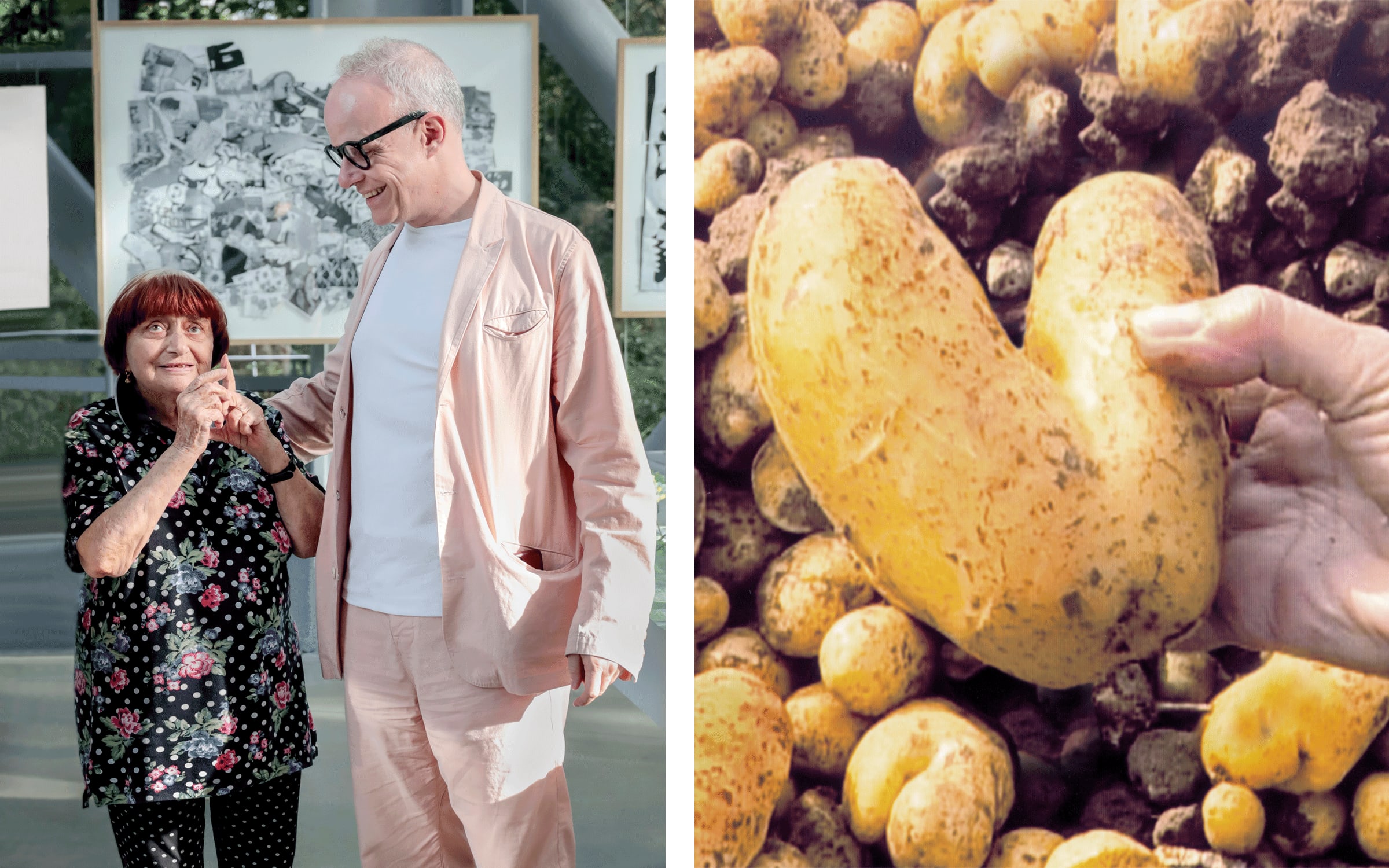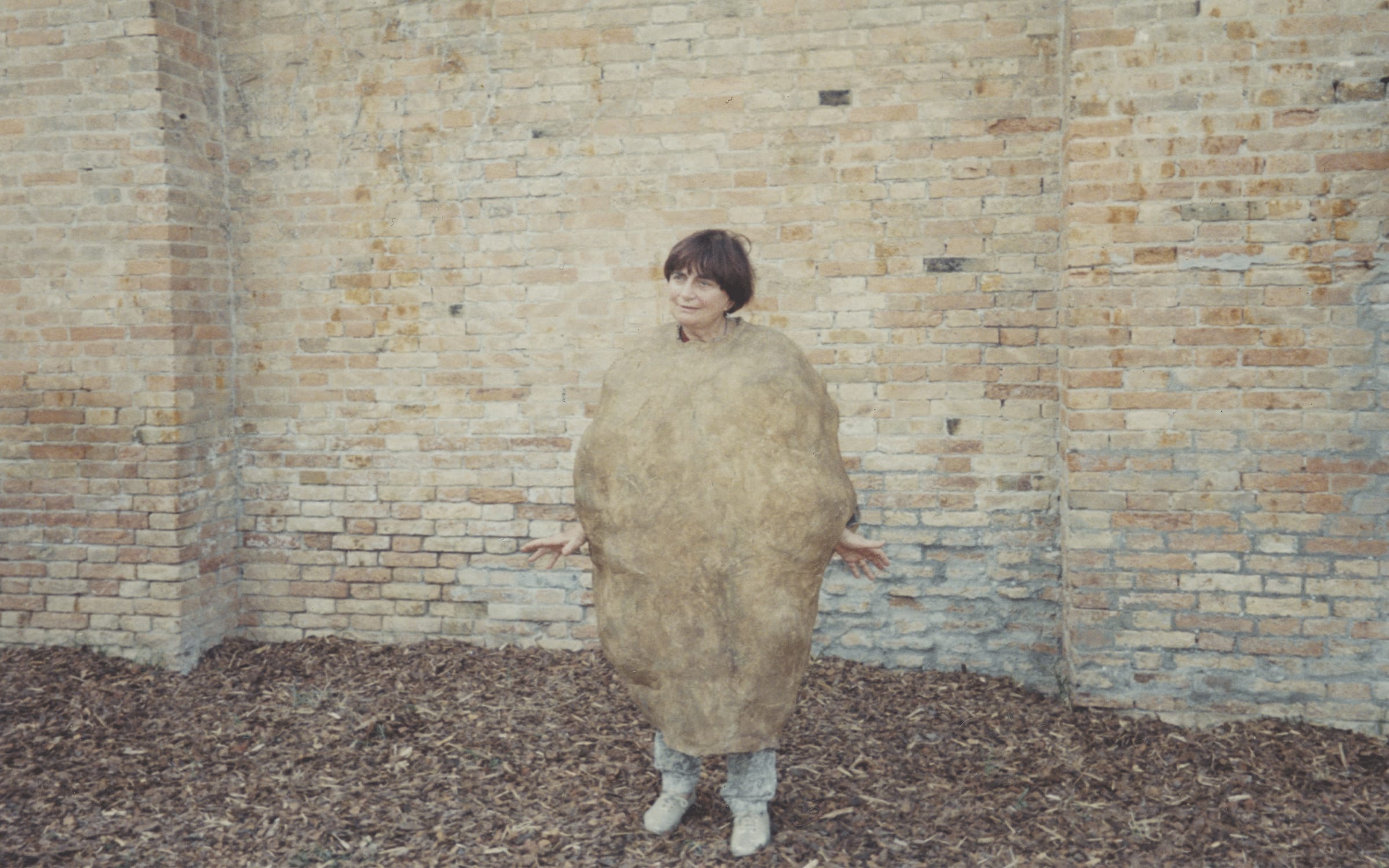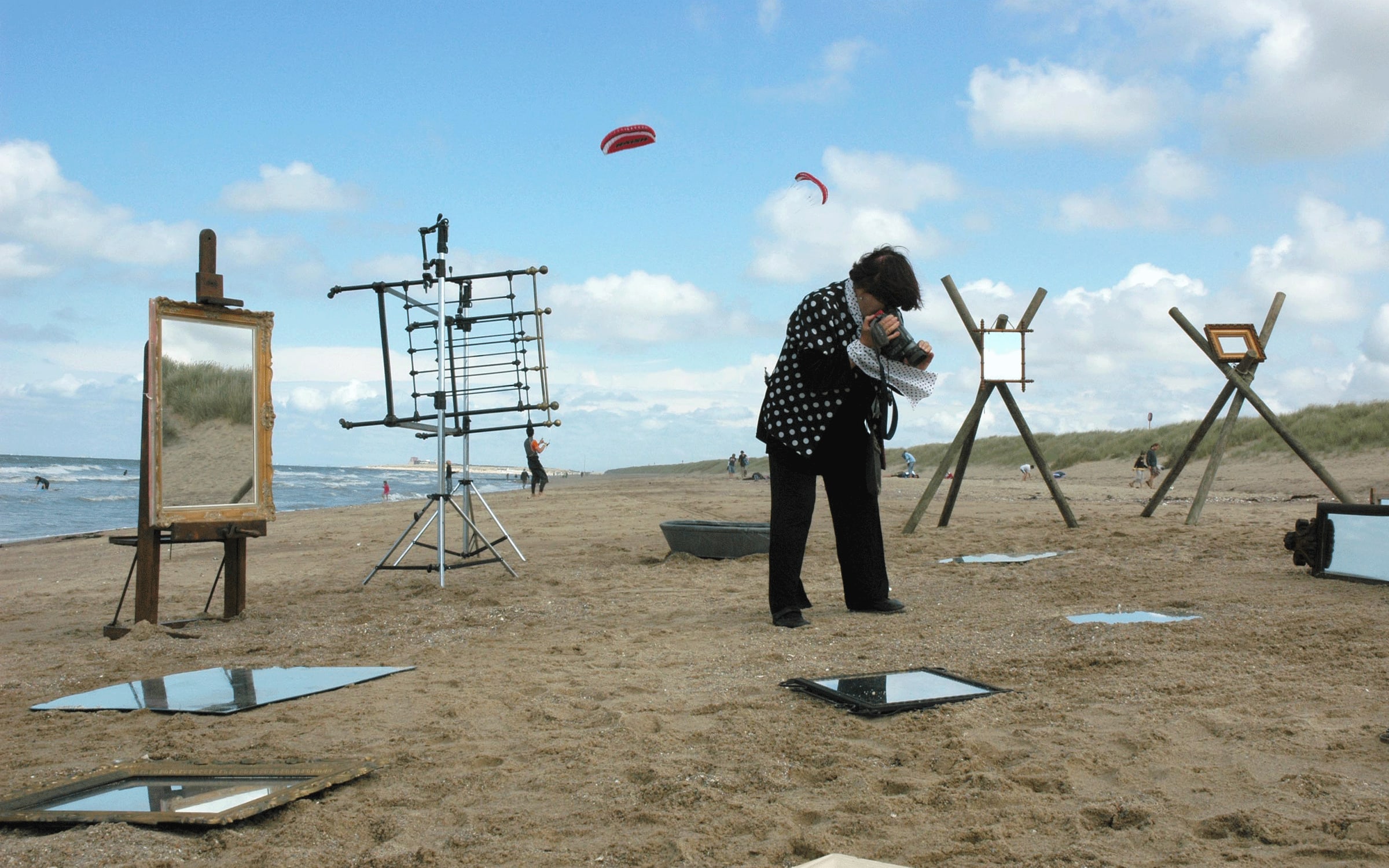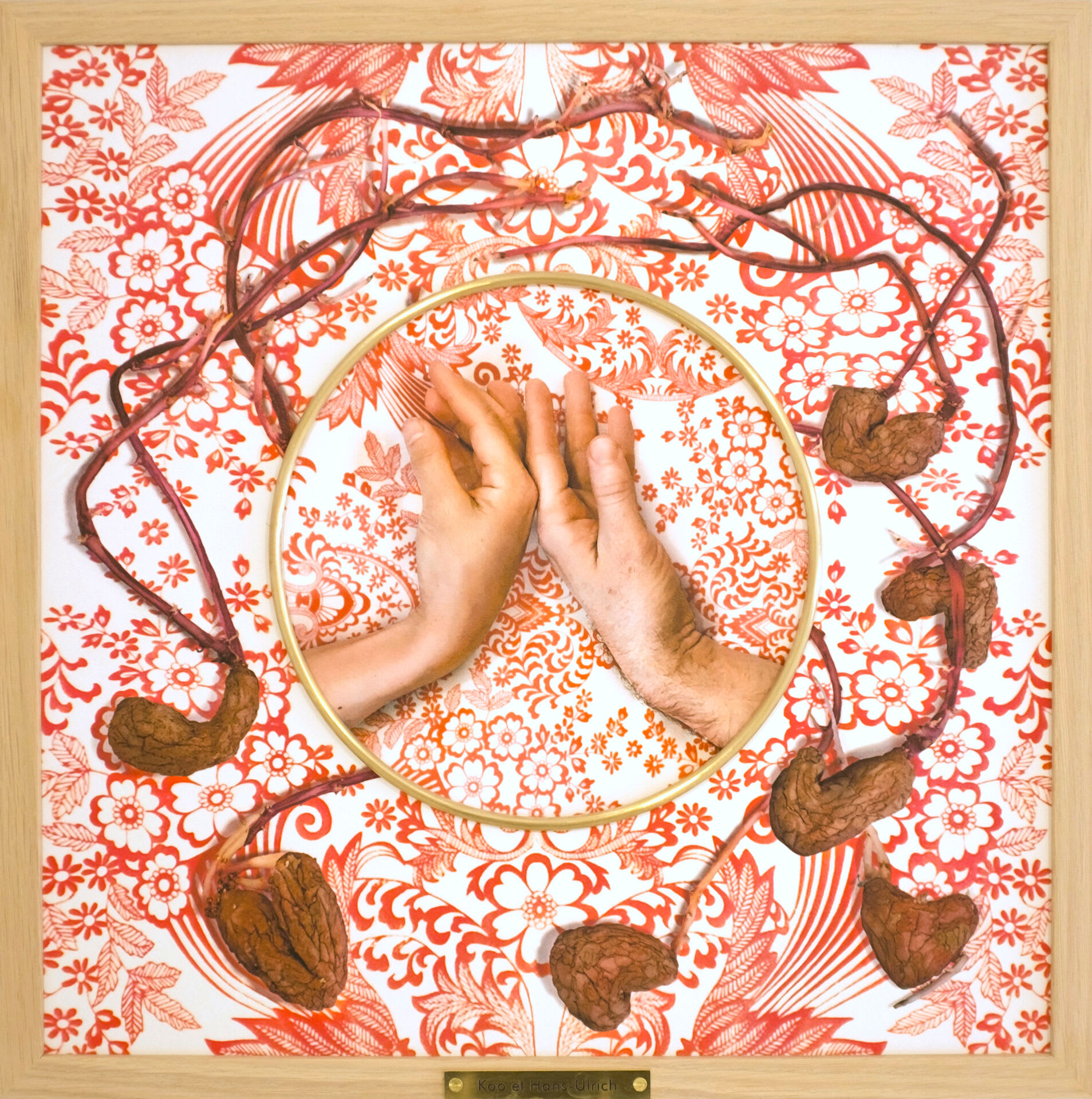I arrived in Paris in 1991, having received a grant to be curator-in-residence at the Fondation Cartier. One of the very first studio visits I did was with Dominique Gonzalez-Foerster, who told me to watch Agnès Varda’s films. That day, we talked about bringing the worlds of documentary, fiction, art, and literature together, about Varda’s immense curiosity, and her idea that she had a friendship with time and enjoyed its passing.
Eleven years later, in 2002, with Molly Nesbit and Rirkrit Tiravanija, I started to work on ‘Utopia Station’ for the 50th Venice Biennale, which was directed by Francesco Bonami. ‘Utopia Station’ was based on Édouard Glissant’s idea of ‘utopie du tremblement’ and the various ways it could be imagined or defined. The exhibition presented works by more than 60 artists, architects, writers, and performers, including Yoko Ono, Martha Rosler, Anri Sala, Tino Sehgal, Liam Gillick, and Glissant himself. Finally, the opportunity arose to collaborate with Agnès. I felt that her work around food, such as her documentary Les glaneurs et la glaneuse (2000) on rural and urban gleaning practices in France, revealed a utopian streak in her work, and that it would therefore be interesting to include her in the exhibition. I called Christian Boltanski and Annette Messager who were both friends of hers and asked them if they could introduce us.

That’s how the first conversation happened. There, in her magical studio/apartment/garden/kitchen on rue Daguerre, I told Agnès about the project in Venice and explained that the idea was also to rethink the art institution of the 21st century. I remember she told me that if you keep your eyes open, everything is interesting – especially people.
When we invited her to participate in ‘Utopia Station’ she said that she’d always wanted to be in the art exhibition in Venice, rather than the film festival in which she had been included many times. Agnès had that desire to go beyond the disciplinary constraints of the film world, where she could only make feature films, documentaries, and shorts.
I’ll never forget the day Agnès arrived in Venice. It was during the heatwave in the summer of 2003 and by 11am it was already very hot in the Arsenale. She arrived disguised as a potato with this amazing, now legendary, costume which even emitted sound. Her installation included the video triptych Patatutopia (2003), which celebrated heart-shaped potatoes. She had hundreds of kilograms of potatoes piled up in the exhibition space. The smell of them hung in the air and you were allowed to touch them. It was a multisensory, multiscreen environment, not just something with one frontal view.
This project triggered a whole new chapter and a new approach for Agnès, enabling her to develop new multidimensional cinematic spaces and experiences. Over the last 15 years of her life, she created art installations at Fondation Cartier, the Biennale de Lyon, Los Angeles County Museum of Art, and many other important venues. It goes to show that when it comes to curatorial and artistic practice, it can be so important to step outside the box.

Her now iconic cinema shacks – cabanes de cinéma – are a case in point. She introduced them in her first major solo exhibition, ‘L’Île et Elle’ at Fondation Cartier in 2006. Each shack is created from 35mm film reels of one of her films. The last hut she built during her lifetime, La Cabane de Cinéma: La serre du Bonheur (2018), is dedicated to her first color film from 1965 which scandalized audiences when it was released by addressing the complexities of love and prefiguring the social revolutions of the 1960s. The shack is at the center of the exhibition I have curated with Arthur Fouray, and in close collaboration with Rosalie Varda, at LUMA Arles.
The exhibition presents part of my archive relating to Agnès. Indeed, Founder and President of the LUMA Foundation, and Founder of LUMA Arles Maja Hoffmann made the archives an important part of her vision for her project from the very beginning.
The shack is comprised of approximately 2,500 meters of 35mm strips. At its center are the sunflowers that appear in the credits of the film Le Bonheur (1965). By deconstructing her films in this way, frame by frame, and foregrounding their materiality, the cabanes de cinéma entirely reinvented the cinema space, offering new non-linear readings of her iconic works. The exhibition also includes my interviews with Agnès over the years; there are nine in total, recorded in different locations.
The last conversation I ever had with Agnès, was a very intimate one. I was preparing an Alexander Calder show with Isabela Mora, in Santander, for which I wanted to create a living art history of Calder through all his unrealized projects, his contemporaries, and the people who knew him well. For this I had scheduled to meet Agnès, but about a month before the planned date, out of the blue, I received a phone call from Sandy Rower, President of the Calder Foundation and grandson of the late artist, telling me I should come immediately because Agnès was not well. I took a train to Paris, arriving there on a Sunday morning, and we did the interview about Calder. She told me a story about how they would travel together to the beach and how he would make jewelry for her out of the boot of his car where he kept all his tools – and without which he would never leave the house.

What was so extraordinary about this last conversation was that at a certain point Agnès transformed our interview into a lunch. More and more people started to arrive. There was her daughter, Rosalie Varda; her son, Mathieu Demy; Christian Boltanski and Annette Messager; JR and Prune Nourry; Koo Jeong A and myself. I had no idea that this would happen, but it became a farewell gathering since it was the last time she would see her friends. We all made an exquisite corpse drawing and then Agnès called us into her kitchen, where she asked each of the couples to sit at the table and hold hands. Then she climbed up a ladder she had installed and took a photograph of our hands from above. She later sent each of the couples a print of the photograph and created her own work from all of them entitled Les Mains complices (2019). She repeated the process over several days with other friends thereby creating a wall of 19 interlocking hands.
I’ll never forget that intimate moment in the kitchen with Agnès and her friends in March 2019. I asked her why she was doing it, and I will also never forget the reply she gave: ‘I was 90 years on this planet, and I want to show that, at the end of the day, what really matters is love.’

Hans Ulrich Obrist is the Artistic Director of the Serpentine in London, and Senior Advisor at LUMA Arles.
‘Archive de Hans Ulrich Obrist - Chapitre 3 : Agnès Varda
Un jour sans voir un arbre est un jour foutu’
Until April 30, 2024
LUMA Arles
‘Viva Varda !’
Until January 28, 2024
La Cinémathèque française, Paris
Published on November 21, 2023.
Caption for full-bleed images, from top to bottom: 1. Agnès Varda in her photography studio rue Daguerre, Paris, 1955 © Estate of Agnès Varda. 2. Agnès Varda, photogram from the Beaches of Agnès revisiting Je ne vois pas la (femme) cachée dans la forêt by René Magritte © 2008 ciné-tamaris. 3. ‘Hans-Ulrich Obrist Archive - Chapter 3: Agnès Varda, A day without seeing a tree is a waste of a day’, My Shack of Cinema: The Greenhouse of Le Bonheur, 2018. © Adrian Deweerdt.